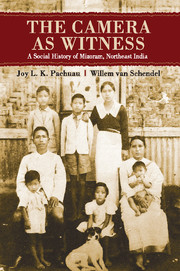Book contents
- Frontmatter
- Contents
- List of Figures
- List of Maps
- Acknowledgements
- I Becoming Mizo
- 1 Introduction
- 2 Coming into View: The First Portraits
- 3 Adjusting Mizo Culture
- 4 Domesticating a New Religion
- 5 Getting Educated
- 6 Controlling the Hills
- 7 The Trouble of Travel
- 8 First Stirrings of the Market Economy
- 9 Mizos in the World Wars
- 10 Mizo Visual Sensibilities
- II Mizoram in the New India
- III Visions of Independence
- IV Mizo Modernities
- Copyrights and Sources
- Glossary
- Bibliography
- Index
8 - First Stirrings of the Market Economy
from I - Becoming Mizo
Published online by Cambridge University Press: 05 May 2015
- Frontmatter
- Contents
- List of Figures
- List of Maps
- Acknowledgements
- I Becoming Mizo
- 1 Introduction
- 2 Coming into View: The First Portraits
- 3 Adjusting Mizo Culture
- 4 Domesticating a New Religion
- 5 Getting Educated
- 6 Controlling the Hills
- 7 The Trouble of Travel
- 8 First Stirrings of the Market Economy
- 9 Mizos in the World Wars
- 10 Mizo Visual Sensibilities
- II Mizoram in the New India
- III Visions of Independence
- IV Mizo Modernities
- Copyrights and Sources
- Glossary
- Bibliography
- Index
Summary
In Mizoram colonial occupation meant much more than political and administrative change. It involved an economic revolution. The local economy had always been open to the outside world, and goods from far beyond the hills had found their place in it. For example, agricultural crops from the Americas – tobacco, maize and chillies – and industrial goods from Europe – guns – had established themselves well before the colonial period. The economy had also long been linked to the ancient trade routes connecting Yunnan (southwest China) with the Bay of Bengal; the principal routes passed close to the mountain ranges of Mizoram.
In other words, Mizos were no newcomers to trade. They had long exchanged strategic goods with each other and with people in the lowlands. In the mid-nineteenth century these goods included salt, cotton, tobacco, fruits, India rubber and wax. A participant of the Lushai Expedition of 1871–1872 gives a hint of the complexity of trade patterns:
In former times these tribes made all the salt they required for their own consumption from salt springs, and they say that to make enough salt for the requirements of an ordinary family, a man's labour was required for three months. A man can now collect sufficient India-rubber [Ficus elastica] in one month to exchange with Bengalee traders for more than enough salt to last him and his family for a year. So that a man who chooses to occupy himself three months in collecting India-rubber will, by bartering the same for salt, have a large surplus of that article, with which to trade with the southern tribes, who, they say, are willing to give one maund of rubber for a quarter maund of salt.
Market relations were based largely on barter – the exchange of goods for other goods or services without using a medium of exchange.
- Type
- Chapter
- Information
- The Camera as WitnessA Social History of Mizoram, Northeast India, pp. 168 - 188Publisher: Cambridge University PressPrint publication year: 2015

